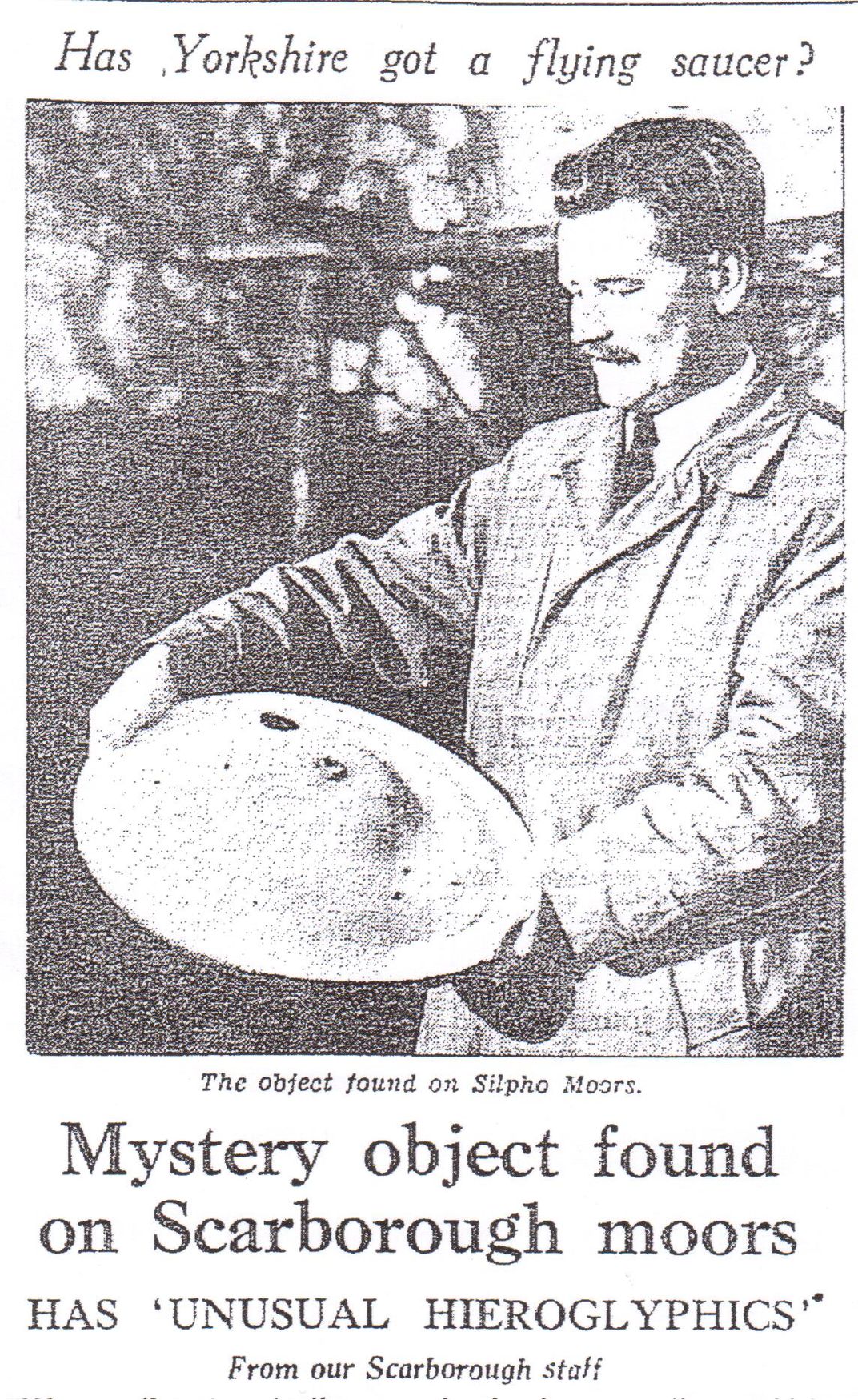Fragments of Famed ‘UFO’ Discovered in Archives of London Museum
Though experts deemed it a hoax, the ‘Silpho Saucer’ created a sensation when it was discovered in the 1950s
/https://tf-cmsv2-smithsonianmag-media.s3.amazonaws.com/filer/65/e9/65e98179-1368-497b-86a1-3bb67fa0c110/20180118_150758.jpg)
In 1957, three men were driving by the Silpho Moor near Scarborough, England, when they saw a glowing object light up the sky and crash to the ground. One of the men got out of the car to investigate, and found a metallic saucer lying in the bushes. Though experts were emphatic that the object was not a UFO, the incident caused a sensation in the UK, with headlines proclaiming that “a real flying saucer” had been found.
The saucer was studied and taken apart. Eventually, it disappeared, prompting some to speculate that it had been deliberately concealed. But six decades after the initial discovery, parts of the so-called “Silpho Saucer” have surfaced once again. As Sarah Knapton reports for the Telegraph, fragments of saucer were recently found inside a cigarette box in the archives of London’s Science Museum.
The objects were identified by David Clarke, a lecturer at Sheffield Hallam University and a consultant for the National Archives UFO project. He was giving a talk on the Ministry of Defense’s UFO files at the Science Museum when a staff member approached him and asked if he was aware that fragments of a “flying saucer” had been stored at the museum for decades. According to the BBC, the staffer in question, exhibition developer Khalil Thirlaway, had discovered the fragments in the cigarette tin while looking through folders connected to the aviation historian Charles Harvard Gibbs-Smith.
“I was absolutely amazed when later we opened the tin box and saw the wreckage,” Clarke tells Knapton. “It was obvious these were the remains of the missing Silpho Saucer.”
The saucer was covered in hieroglyphics when the men discovered it in 1957. After it was pried open, a book made of 17 thin copper sheets, each one inscribed with additional hieroglyphics, was found inside. According to Rafi Letzter of Live Science, a local café owner subsequently claimed to have deciphered the hieroglyphics as a message from an alien named "Ullo," who warned of impending atomic war and promised Earthlings that they “will improve or disappear.”
Researchers at London’s Natural History Museum studied the object and concluded that the metal had no extraterrestrial properties and showed no signs of having hurtled through the high temperatures of Earth’s atmosphere. But despite experts’ assurances that the Silpho Saucer was just an elaborate hoax, the public was captivated, and the object drew comparisons to the Roswell “UFO,” the wreckage of a weather balloon, which was discovered in New Mexico in 1947, that excited similiar extraterrestrial fervor.
On his website, Clarke cites UFO expert Jenny Randles, who says she believes the Silpho Saucer incident holds the distinction of being "the most costly and well organised hoax that has ever taken place in Britain."
As Knapton of the Telegraph reports, pieces from the saucer came to the Science Museum in 1963 and were promptly forgotten. The fragments may not have much scientific value, but Thirlaway, the exhibition developer, says his conversation with Clarke has illuminated the Silpho Saucer’s rich history.
“We didn't know there was this massive cultural history behind it, it really brought the items to life for us,” Thirlaway tells the BBC. “There's a chance they may go on display as we're now aware of their cultural significance.”
